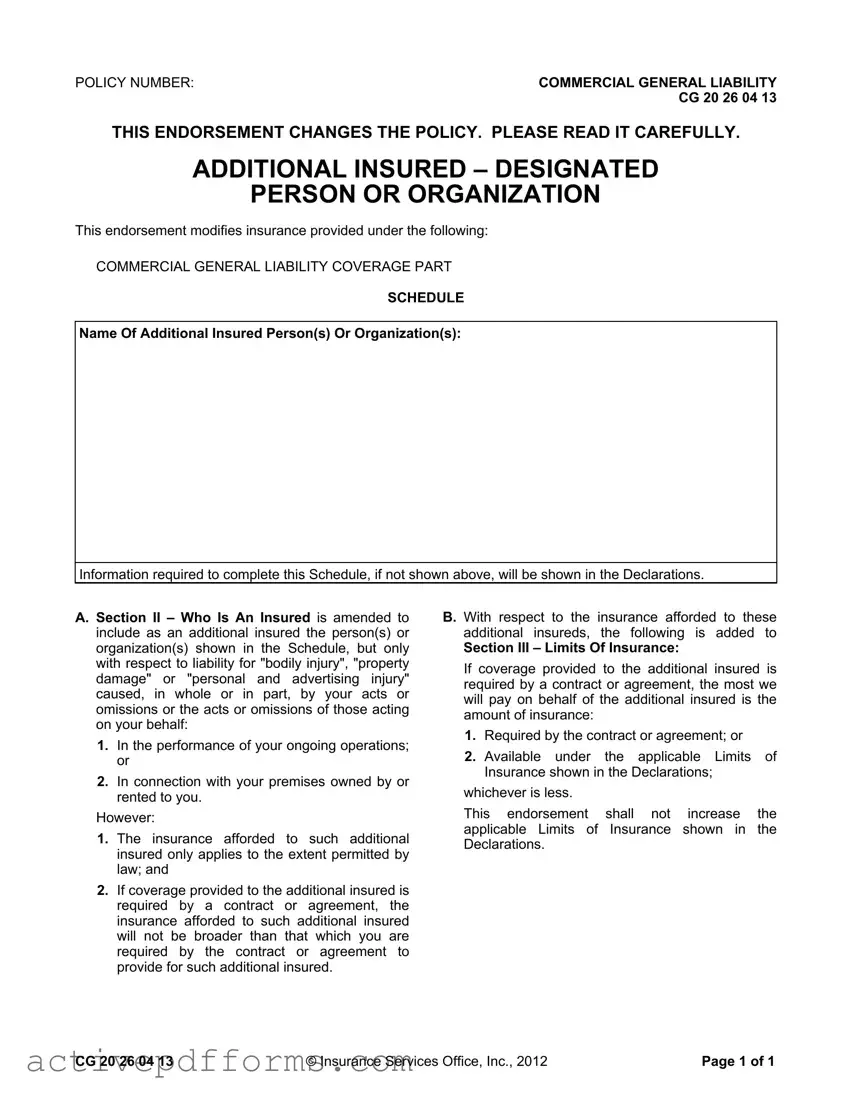In the labyrinth of commercial insurance policies, endorsements such as the CG 20 26 04 13 form play a crucial role in defining the scope and extent of coverage. This specific endorsement, integral to commercial general liability insurance, aims at extending the insurance protection to include additional insured persons or organizations, thereby modifying the standard coverage. Typically appended to the commercial general liability coverage part, this document necessitates careful attention because it delineates the conditions under which an additional insured is covered, focusing particularly on liability arising from bodily injury, property damage, or personal and advertising injury. Specifically, it addresses the cover for such liabilities when they stem from the actions or omissions of the named insured or those acting on their behalf, either in the execution of ongoing operations or in association with the insured’s premises. Crucially, the endorsement outlines that coverage for additional insureds is subject to legal permissibility and, when mandated by contractual agreements, will not exceed the obligations outlined within those contracts. Additionally, it adjusts the insurance limits, stating clearly that any coverage extended will not surpass the lesser of the contractual requirements or the limits depicted in the policy declarations, ensuring that the endorsement does not inadvertently increase the overall limits of insurance. Exploring the specifics of the CG 20 26 04 13 form unravels the complexities of extending coverage to additional insureds, highlighting the importance of understanding the nuanced legal and contractual obligations that govern these amendments to insurance policies.

